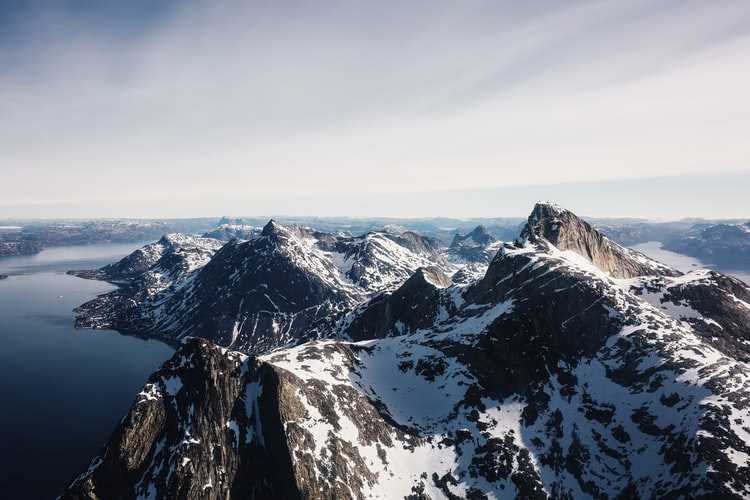
The threat of global warming and climate change may be more imminent than you think. It may be that the manifestations of the change are around you, but you just failed to take note. Carbon Brief, a British website that covers climate science and policy, has identified nine tipping points that could lead to irreversible changes with disastrous consequences.
While the impact of climate change is visible to scientists and researchers — shifting weather patterns, rising sea level and heating oceans — policy makers do not look convinced. At the recently concluded COP-25 summit, very few governments took serious steps to rein in the emission of greenhouse gases, responsible for global warming.
READ: Climate change — Chinstrap penguin population down 77%
Carbon Brief’s science editor Robert McSweeney has identified nine tipping points across the globe — from the shifting Indian monsoon and collapsing ice sheets to Amazon forest dieback. Though the changes will be gradual, there are some fragile climate and ecological systems that could change dramatically and irreversibly.
Here are the nine tipping points listed by McSweeney that can push components of the Earth system into irreversible change.
Indian monsoon shift
Monsoon refers to the seasonal reversal of winds and its accompanying rainfall in West Africa and India. Indian monsoon affects Indian subcontinent and surrounding seas. The southwest monsoon blows during warm months and the northeast monsoon during cooler months, resulting in large amounts of rainfall. India receives 70% of its annual rainfall from monsoons. For some areas in western and central India, it is responsible for around 90% of the rainfall. India’s agriculture is largely dependent on monsoon rains.
READ: Climate change — Ocean currents are moving faster than earlie
With land areas heating faster than oceans, there could be more rains. While the monsoon exhibits huge variability, it amounts to a 10% shortfall in central India. The reason for this variance could be air pollution from the region. IPCC’s 1.5C report says large scale variance in Indian monsoon is unlikely under 1.5-2C warming but suggests the intensity of monsoon rains may intensify at 3C warming. The area covered by monsoon systems will increase in the 21st century. The winds may weaken, but monsoon precipitation is likely to intensify due to higher moisture content in the atmosphere. Monsoon onset could be earlier, and retreat could be delayed, resulting in longer rainy season.
West African monsoon shift
The West African monsoon brings rains to the semi-arid grassland between the Sahara Desert and tropical rainforests. The low pressure over the Sahara brings moist winds from the ocean and results in rainfall. There is an element of unpredictability in the West African monsoon. Between late 1960s and 1980s, lack of rain led to a famine that killed thousands of people.
Greenland ice sheet disintegration
Water from Greenland ice sheet is adding 0.7mm to global sea levels every year. The ice sheet is the second largest in the world and holds enough water to raise the sea level by 7.2 metres. No study can predict the tipping point for ice melt that could lead to an irreversible collapse of world’s coastlines. Most of the melt in Greenland occurs at the surface and calving of icebergs from its edge. The ice sheet could face decline at 1.8C of warming, triggering melt that takes thousands of years.
Permafrost losses
Permafrost is soil or rock that contains ice or organic material that has remained frozen for at least two years. A quarter of non-glaciated land in the northern hemisphere is Permafrost that holds huge amounts of carbon from dead plants and animals over thousands of years. One of the most important changes due to global warming is the thawing of Permafrost that contain at least twice as much carbon than currently in the Earth’s atmosphere. As these vast tracts thaw, they will bring microbes out of hibernation and allow them to break down the organic carbon in the soil, releasing CO2 and methane into atmosphere. These greenhouse gases can accelerate global warming.
Atlantic meridional overturning circulation breakdown
The Atlantic Meridional Overturning Circulation is a system of ocean currents that warms Western Europe by bringing water from the tropics. The AMOC is a cog in the global ocean circulation network that carries heat around the world. AMOC has been weakening since the middle of last century, but recent research suggests the system may be heading to a complete shutdown. The reason for the current concern is that the AMOC could become unsustainable at a certain threshold. While there is no clarity on what this threshold is, but most scientists think a shutdown will require 3C or 4C warming. The only way for the humanity is to limit warming to below 2C, stipulated by the Paris Agreement.
Boreal forest shift
Boreal forests are found in high latitudes of northern hemisphere. Tree growth here is curtailed by cold climate that lasts through the year. The vegetation is species that can survive in the cold such as pine and larch. Boreal forests cover 30% of all forests in the world. They are estimated to hold a third of all terrestrial carbon. The summers are getting too warm for the vegetation, increasing vulnerability to disease and frequent wildfires. A severe fire could render the boreal forests incapable of regenerating.
Amazon rainforest dieback
The Amazon rainforest is a third of the size of Europe and spread across nine South American countries. The ecosystem of rain forest is sustained by moist conditions, but the rain forest itself can generate up to half of its total rainfall. The forest can be affected by shortfall in rainfall or the area of forest. A decline in rainfall due to global warming, reduced transpiration due to large amounts of CO2, and fewer trees leading to less moisture can affect a rainforest. The problems with the Amazon could be a result of a combination of all three and the area could be pushed to a point of no return.
West Antarctic ice sheet disintegration
The long-term stability of the West Antarctic Ice Sheet has been under threat as the marine-based sheet is susceptible to increasing ocean heat. It has enough ice to raise sea level by 3.3 metres, which means the stability of the sheet is crucial for the survival of low-lying coastline across the globe. A study published in Nature in 2018 found that the ice loss from the sheet jumped from 53bn tonnes annually during 1992-97 to 159bn tonnes per year in 2012-2017 period. The ice sheet is at risk of melting from above and below. As ice shelves float on water, their collapse will not lead to a rise in sea level but thinning of WAIS could trigger irreversible loss of land ice into the ocean causing the sea level to rise.
Coral reef die-off
Coral reefs are among the ecological systems that are extremely sensitive to global warming. Rising temperatures and an increase in atmospheric concentration of CO2 threaten to kill coral reefs across the globe. Coral reefs are also threatened by overfishing, sedimentation, runoff of nutrients from the land, storm damage, ocean acidification and shifts in ocean circulation.
Sajna Nair is a former banker. Her areas of interest are environment, art and culture.

